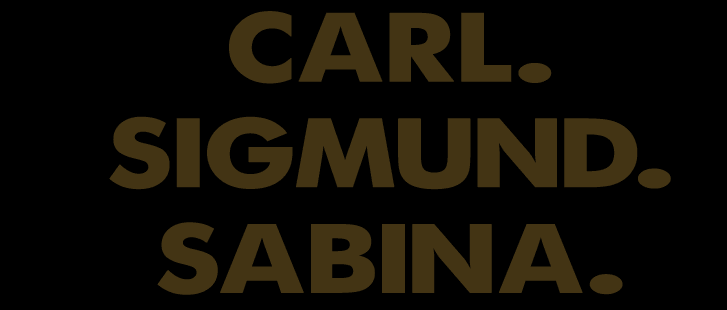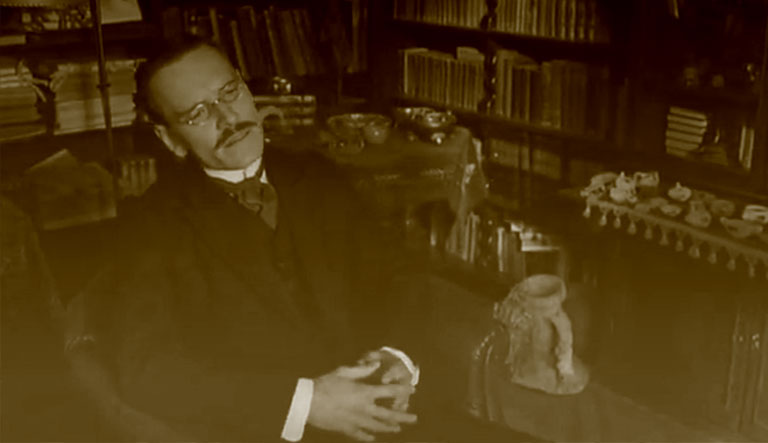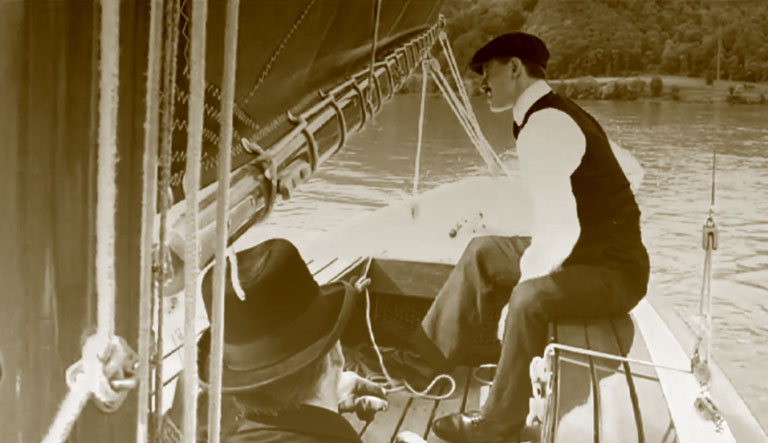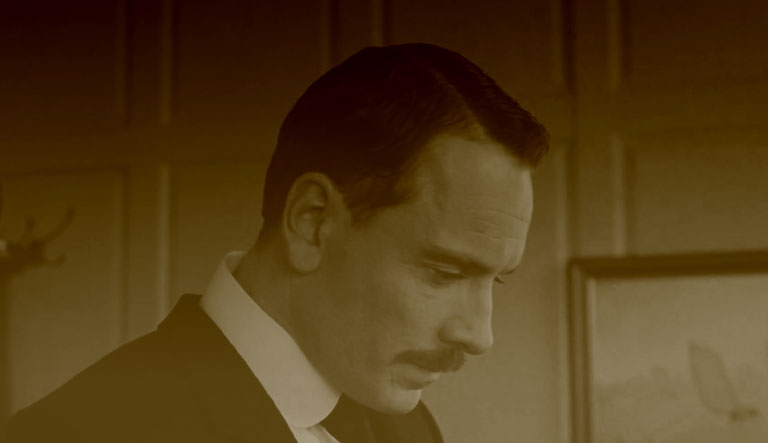
|

|

|

|

|

|

|

|

|

|

|

|

A Dangerous Method portrays the true life events of a decade long relationship between three pioneers of modern thought and founders of psychoanalysis: Carl Jung, Sigmund Freud, and Sabina Spielrein. Through the discovery of Spielrein's diaries and correspondence with Freud and Jung, the film is able to reveal somewhat unknown aspects of these individuals' lives. Justice is accomplished in the meticulous care paid not only to the behaviors and intricacies of each character, but also to the individual and cultural views of human behavior as the pioneers explored varying thoughts about how to interpret these behaviors.
The accuracy of the film's portrayal was enhanced not only by filming on location in Vienna at both the Burgholzli Hospital and Freud's home, but also through the use of dialogue taken directly from the correspondence between Jung, Freud and Spielrein. Additionally, it is interesting to note that even the distinct images that explore the behaviors of a young, afflicted Spielrein are direct interpretations of the hospital records which note that the 'patient laughs and cries in a strangely mixed, compulsive manner. Masses of tics; she rotates her head jerkily, sticks out her tongue, twitches her legs... Cannot stand people or noise.'

When Spielrein arrived at Burgholzli Hospital at the age of eighteen, she had been very protected from sexuality and sexual information. She was assigned to Dr. Jung, the newly qualified doctor, as his first patient and records indicate that he diagnosed her as 'hysteric'. Jung decides to attempt a new technique on Spielrein, one he had read about in a book by a Viennese neurologist, Sigmund Freud. The technique is psychoanalysis, later dubbed the 'talking cure' – the dangerous method that inspired the film's title. The audience quickly learns of Spielrein’s history of physical abuse and complex dysfunctional family relationships as well as her association between pain, love, and ultimately pain providing her sexual gratification. This intimate style of therapy is "dangerous" in that you are unsure of what it may uncover and can lead to blurred boundaries between patient and doctor. This proved to be the case for Jung and Spielrein; however, it also proved to be a powerful healing process demonstrated by the fact that Spielrein’s behavior and mental clarity greatly improved in just a year.
Throughout this difficult and challenging case, Jung looked to Freud for advice and input, thus marking the commencement of the historic six year partnership between the two men where they challenged, debated, and explored many concepts in the search for an answer to the question of what was the basic driving force behind human behavior and what led to episodes of mental illness.

Following Spielrein's treatment, Jung continued an intellectual relationship with Spielrein, as she began studying to become a psychoanalyst herself. At the same time, Jung began treating a new patient, fellow psychologist Otto Gross (played by Vincent Cassel) at the request of Freud. Gross, who strongly believed in not repressing any desire, lived a life of excess and indulged in all things forbidden by society. Gross' influence transformed Jung and Spielrein's intellectual relationship into a sexual interlude as Jung was looking for validation and approval to act on a desire he knew to be against his better judgment. However, this indulgence in a sexual relationship with Spielrein proved to be even more powerful and healing for her; normalizing her "taboo" desires to experience pain via spankings and other submissive behaviors strengthened her mental health while the transgression may have weakened Jung's.
The film explores their relationships from Spielrein's entry to the hospital in 1904 until the dissolving of the intricate partnership of Freud and Jung in 1912. Though Freud may be more of a celebrity, the film is clearly from Jung's perspective, exploring his thoughts, beliefs, and challenges when faced with making decisions such as succumbing to his sexual desires towards a patient, Spielrein, as well as going against the rigid ideas of his mentor, Freud. Jung had been a long admirer of Freud's prior to their first meeting in Vienna in 1907 where they engaged in a thirteen hour long conversation. This initial meeting of such great minds marked Freud’s discovery of his heir. But Jung had never entirely accepted Freud's theory. Their relationship began to cool in 1909, during a trip to America, where they were entertaining themselves by analyzing each others' dreams when Freud seemed to show resistance to Jung's efforts and said that they would have to stop because he was afraid he would lose his authority! Jung was insulted, and the relationship was never the same. Jung and Freud met face to face for the last time in 1913 for the International Psychoanalytical Congress in Munich, Germany. Jung gave a talk on psychological types, the introverted and the extroverted type, in analytical psychology. This constituted the introduction of some of the key concepts which came to distinguish Jung's work from Freud's in the next half century.

Jung is noted for his work on self-actualization, understanding the human psyche, and his theories on personality. These concepts have become part of common language; for instance, introverted, extraverted, and having a sense of self are all Jungian terms. Freud is most known for the concepts of id, ego, and superego. Both Jung and Freud looked at the connection between the conscious and unconscious mind, but ultimately differed on theories of how they connected. Additionally, though Spielrein is not often referenced in the history of the development of psychoanalysis, her theory of the sexual drive as being both an instinct of destruction and an instinct of transformation preceded both Freud's "death drive" and Jung's views on "transformation." This illustrates how she inspired both men's most creative ideas. Spielrein also brought psychoanalysis to Russia and is associated with works of renowned child development theorist Jean Piaget, prior to being executed with her two daughters in the Holocaust. Each was brilliant in their own right, but their relationships with each other expanded their creativity to remain inquisitive in a common drive to understand themselves as well as the behaviors of others.
